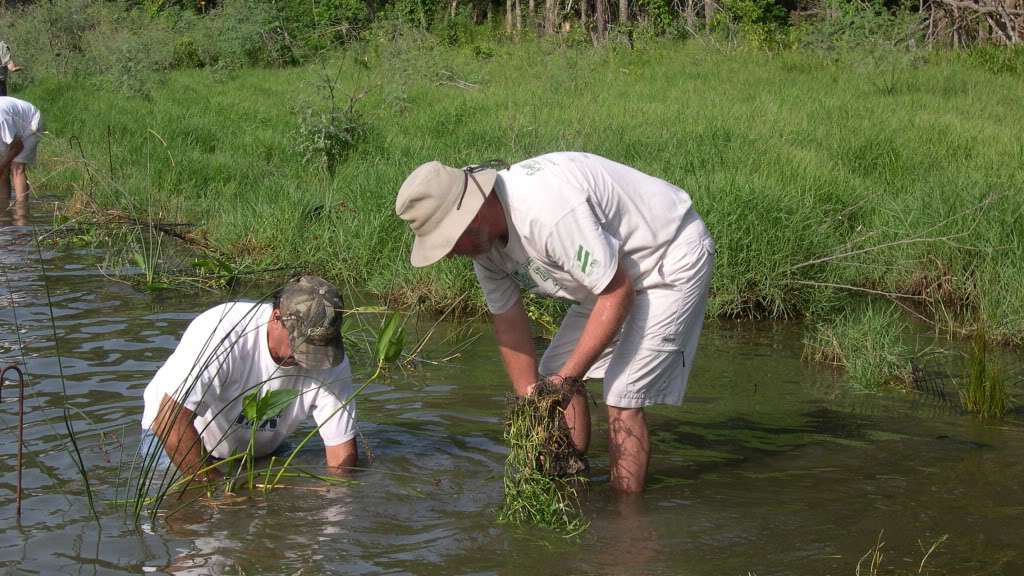
The battle to control hydrilla growth in Lake Conroe is a lesson in lake and fishery management. In the 1970s the 21,000-acre lake located about 65 miles north of Houston was one of the best largemouth bass fisheries in Texas. The reason being was that the lake had a large growth of hydrilla, an invasive plant that takes root in the bed of the lake and has long stems, up to 25 feet in length that branch out at the surface where growth becomes horizontal and forms dense mats. The plant’s aggressive growth, hydrilla’s 20- to 30-foot stems can add up to an inch per day, can spread into shallow water areas and form thick mats.
The hydrilla, a member of the lotus family from Asia is used in the United States in aquariums. Hydrilla was likely introduced into Lake Conroe when someone dumped the family goldfish.
Anglers loved the greenery as it provided lots of habitat for bass to hide in and ambush prey and anglers’ lure as they came by. However, the growth of hydrilla was spreading so fast it was beginning to block off and take over some of the major arms of the lake.
The lakefront property owners did not share the same love for the waterweed as anglers did. Two thirds of the lake has waterfront development with lots of valuable lake front homes, condominiums and hotels. The lake is a boating, skiing and fishing mecca for Houstonians.
Entrance by water to docks and piers was choked off. Homeowners and subdivision groups were up in arms demanding something be done, voicing their complaints to Texas Parks & Wildlife Department and the San Jacinto River Authority, the two controlling agents for the lake.
Between 2001 and 2008 was the time of the abundant growth of hydrilla. Major arms of the lake such as Loch Ness, the back of Little Lake Creek, Atkins Creek, Lewis Creek … the back parts in the shallow water, and along the bulkheads of people’s homes were completely cut off.
First attempts at controlling the spread of hydrilla included water harvesting of the weed, but the hydrilla was spreading faster than the harvesting equipment could keep up with. Poisoning was tried. Both attempts were costly and ineffective.
Why not let nature do the job? Triploid grass carp are inexpensive compared to most other aquatic vegetation control methods. In 1981 the Texas Legislature passed special legislation giving biologists from Texas A&M University permission to introduce Triploid grass carp into Lake Conroe and make a detailed study of what happens.
The results weren’t happening quick enough to suit the entrapped lakefront property owners. An additional stocking of carp was dumped into the lake. “The carp were flourishing, eating away all the hydrilla, plus every bit of aquatic vegetation left in the lake,” said Butch Terpe. Terpe has been guiding on Lake Conroe since 1988.
“When the carp ate the hydrilla and all the other grasses you could see, the crappie numbers dropped off significantly. Many of the guides and anglers quit fishing for crappies because the fishing became so poor. I stopped doing crappie trips for about four years because the numbers were gone.”
The lifespan of the grass carp is between 10 and 15 years.
Fishery biologists and other concerned anglers went into action to prevent a complete destruction of a once alive and flourishing fishery. The renaissance of Lake Conroe bass fishing happened when fishing clubs began constructing and placing brushpiles at various locations throughout the lake, giving baby bass and crappies some places to hide from predators after their spawn.
“I generally put out about 25-30 every year. I did it for crappie, not for bass as much, but I catch a lot of bass off of the brush,” said Turpe.
About 10,000 native aquatic plants have been planted in Lake Conroe with the majority being water willow. The vegetation was planted by TPWD, San Jacinto River Authority, Seven Coves Bass Club/Lake Conroe Friends of Reservoirs Chapter (B.A.S.S. affiliate), Texas Black Bass Unlimited, the Army Corps of Engineers Lewisville Aquatic Ecosystem Research Facility and many volunteers, including students from Texas A&M University.
Also, concerned fishing groups paid for the restocking annually of Florida bass fry, which was in addition to what TPWD was stocking.
Now the hydrilla has been successfully controlled and fishery managers have learned how many carp are needed for a water body size to control weeds. TPWD fishery biologist, Mark Webb says overall Lake Conroe is a very healthy ecosystem with excellent water quality and a thriving fishery.
“It exhibits a moderately high density of largemouth bass with very good growth and condition. Reproduction and recruitment are very good.”
Trophy potential is good. The Lake Record Largemouth Bass for Lake Conroe was 15.93 pounds (27 inches). Seventeen largemouth bass over 13 pounds have been entered into TPWD’s Toyota ShareLunker Program with the most recent in 2015.
Results from several amateur bass tournaments on Lake Conroe in spring of 2016 showed the average top 10 five-fish bag weights were 19.2 pounds; average big bag five-fish bag weights were 25.9 pounds; average big bass weight was 8.3 pounds.
From good fishing in the 80s, to an impending environmental disaster, back to good fishing again, Lake Conroe has seen it all.

